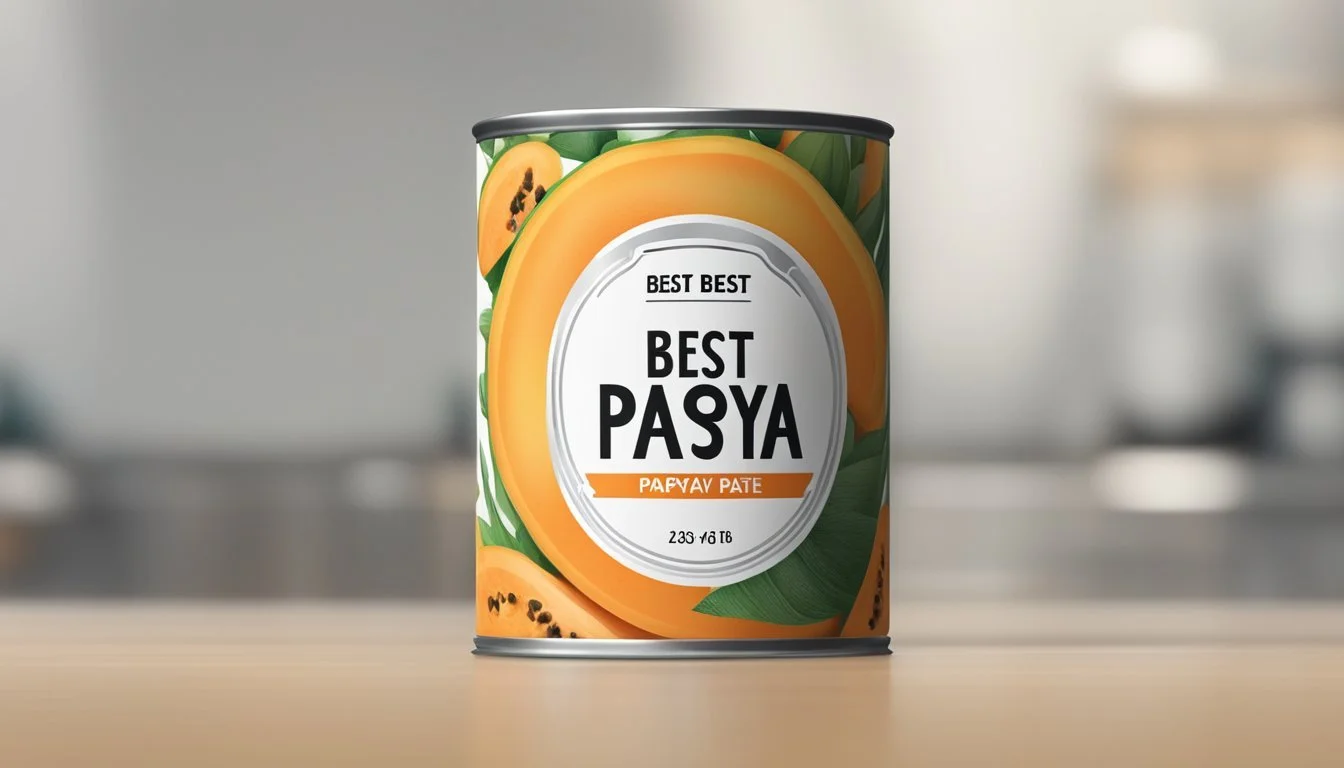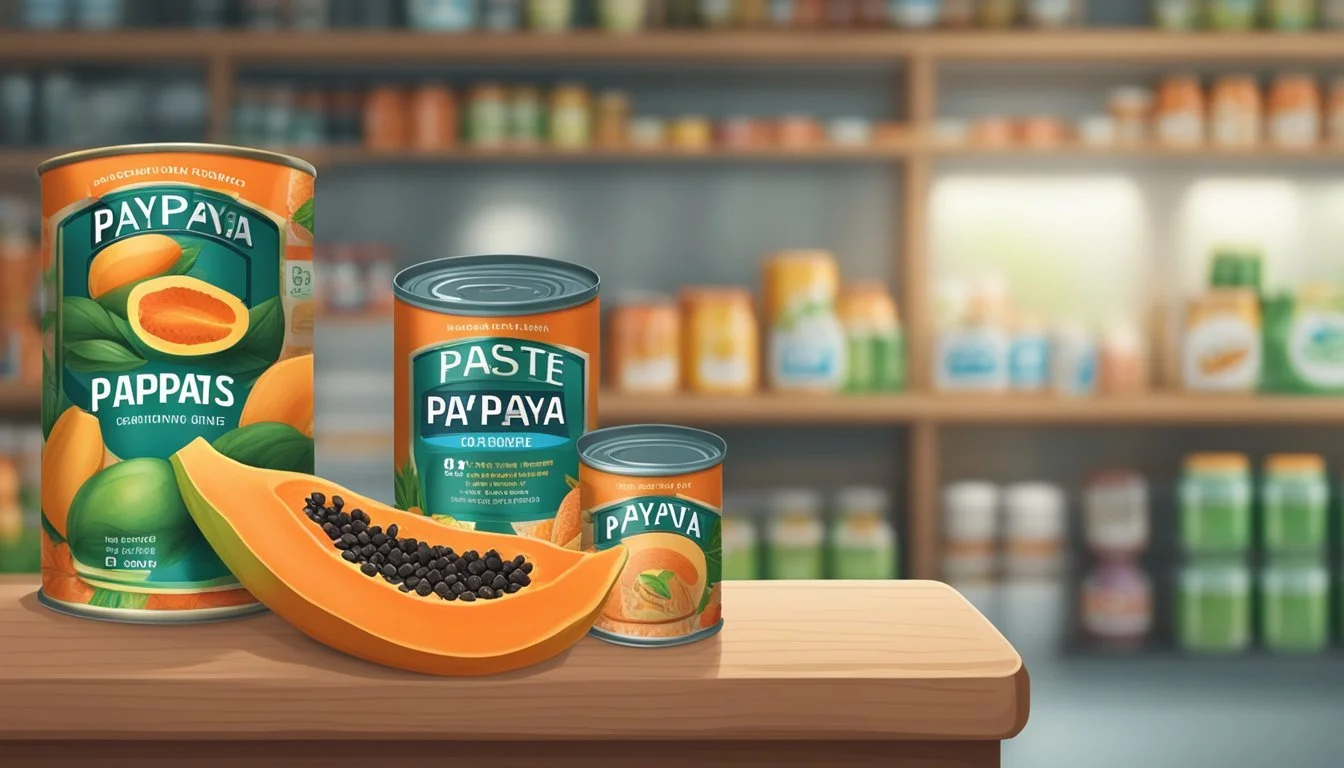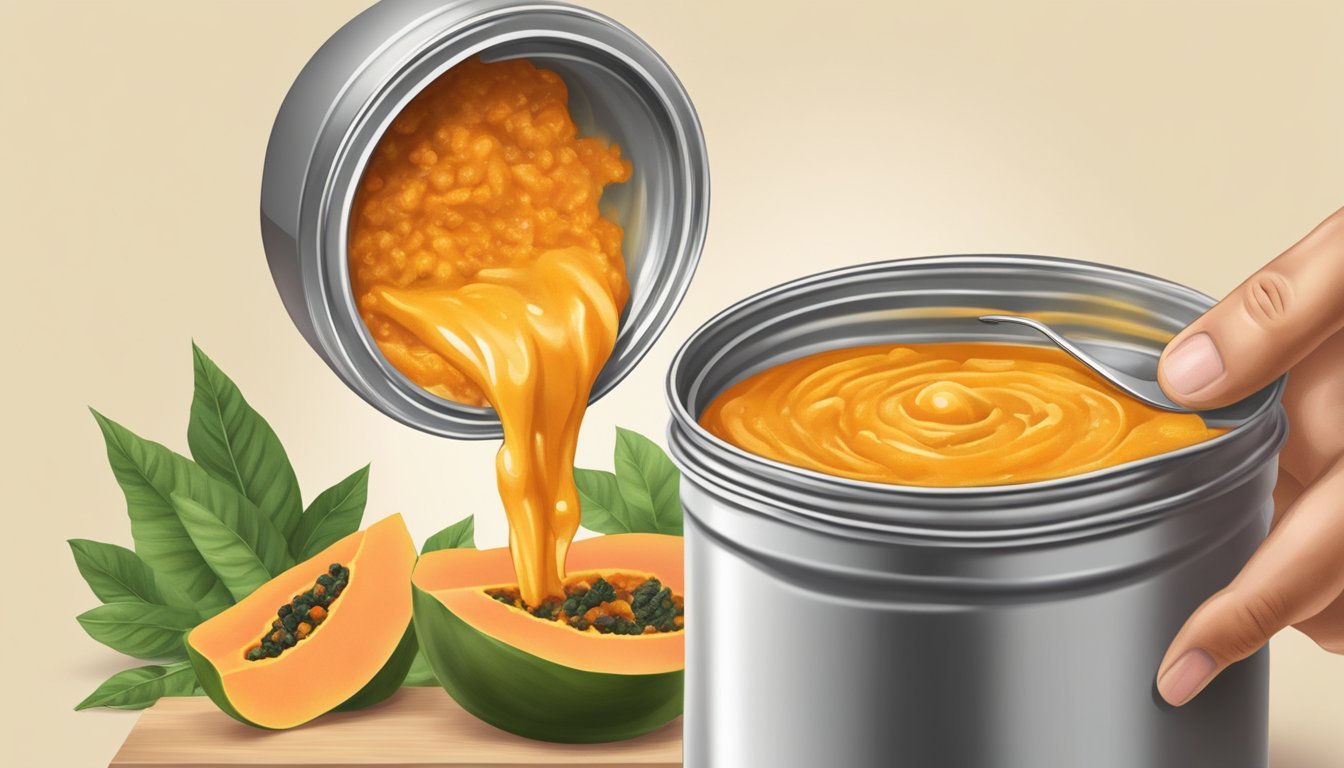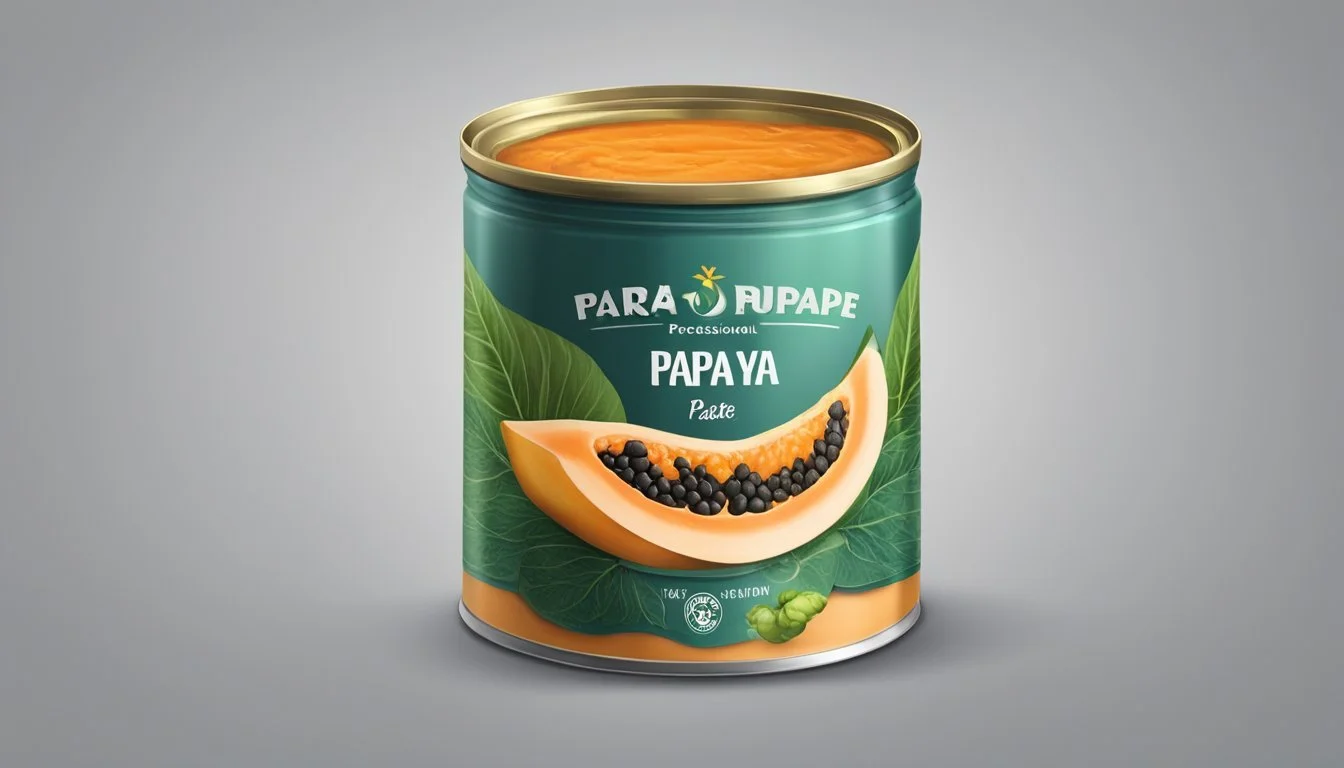How Long Does Canned Papaya Paste Last?
Shelf Life and Storage Tips
Canned papaya paste offers a convenient and long-lasting option for those who enjoy the flavor and culinary benefits of this tropical fruit. When stored properly in a cool, dry pantry, unopened cans of papaya paste can maintain their quality for up to two years. However, the peak quality of the product is typically experienced within the first year of storage; beyond this period, while still safe, the paste may experience subtle changes in flavor and texture.
Once opened, the shelf life of papaya paste decreases considerably. To preserve its quality and extend its usability, it should be transferred to a sealed container and stored in the refrigerator. Here, the paste can retain its taste and safety for use within five to seven days. Freezing is another viable option for longer storage, with the paste keeping well for several months. Nonetheless, even when frozen, it's important to maintain food safety protocols and ensure that the paste is stored in a freezer-safe container.
It's crucial to note that the longevity of canned papaya paste also depends on the storage conditions it's kept in. Factors such as exposure to high temperatures, moisture, and direct sunlight can significantly shorten the product's shelf life and affect its quality. For optimal preservation, consumers are advised to keep the paste in stable conditions, away from these compromising elements.
Understanding Shelf Life
The shelf life of canned papaya paste is determined by factors such as storage conditions and packaging integrity, influencing its quality and safety for consumption.
Factors Affecting Shelf Life
Several factors contribute to the shelf life of canned papaya paste, which can range from 1 to 5 years unopened.
Storage Conditions: Cool, dry storage helps maintain quality. Temperature variations can damage the product.
Packaging: Cans should remain sealed, free from dents or rust.
Spoilage and Signs of Spoilage
Even within its shelf life, canned papaya paste can spoil if not stored properly. Indicators of spoilage include:
Visual Cues: Bulging cans may indicate bacterial growth.
Odor: An unusual or off odor can be a sign of spoilage.
Consumers should discard any canned products that exhibit these qualities to ensure food safety.
Expiration Date vs. Best-Before Date
Canned papaya paste packaging typically includes an expiration date or best-before date. Consumers often confuse these terms:
Expiration Date: Indicates the last day a product is considered safe to eat.
Best-Before Date: Refers to quality—flavor and texture may start to deteriorate after this date, but the product may still be safe to eat if there are no signs of spoilage.
The USDA notes that canned foods, when unopened and stored properly, can be safe beyond these dates, provided no signs of spoilage are observed.
Proper Storage Practices
Preserving the quality and extending the shelf life of canned papaya paste hinges on adhering to proper storage practices. This section delineates optimal conditions for storing unopened and opened canned papaya paste, along with alternative storage methods.
Unopened Canned Papaya Paste
To maximize the lifespan of unopened canned papaya paste, it should be stored in a pantry or any cool and dry place. Keeping it away from direct sunlight and heat sources helps in maintaining quality. The ideal temperature is at or below room temperature, which typically ranges from 50 to 70 degrees Fahrenheit. Following these conditions can lead to preservation that lasts up to the "best by" date provided by the manufacturer.
Opened Canned Papaya Paste
Once the can is opened, the unused papaya paste should be transferred to an airtight container to prevent contamination and preserve freshness. It's vital to store the container in the fridge, ensuring that the paste remains wholesome for use for approximately 5 to 7 days. The cool temperature of the fridge significantly slows down the growth of microorganisms.
Alternative Storage Options
For long-term storage, freezing is a feasible option. Place the papaya paste in a freezer-safe airtight container or heavy-duty freezer bags. Clearly label the container with the freezing date for future reference. When stored in the freezer, the product can maintain its best quality for 1 to 3 months. However, it's important to note that while freezing can extend shelf life, it may slightly alter the texture of the paste once thawed.
Using Canned Papaya Paste in Cooking
Canned papaya paste is a versatile ingredient that can enhance the flavor profile of various dishes. Its use in cooking ranges from tenderizing meats to acting as a base for complex sauces and stews.
Culinary Applications
Canned papaya paste finds its place in the kitchen due to its enzymatic properties which make it fantastic for tenderizing meats. Chefs often incorporate it into marinades, allowing the natural enzymes to break down tough meat fibers, resulting in succulent and tender cuts. Here is a list of other culinary applications where canned papaya paste is featured:
Stews and Soups: It's added to stews and soups for a subtle sweetness and tropical flair.
Sauces: Papaya paste is used as a thickening agent and flavor enhancer in various sauces, including exotic pasta sauces.
Seasonings: It can be mixed with other spices to create unique rubs for meats.
Vegetarian Dishes (What wine goes well with vegetarian dishes?)
: As a meat tenderizer alternative, it offers a fruit-based option that complements plant-based proteins.
Flavor Enhancement
The flavor profile of canned papaya paste is ideal for adding a flavorful touch to dishes without overpowering them. It's particularly useful in:
Pasta Sauce: A spoonful can add a new dimension to a traditional pasta sauce, imbuing it with a fruity undertone.
Seasoning Blends: When combined with spices, it creates a seasoning that enhances the overall taste of a dish.
Soups and Stews: A dollop of papaya paste can intensify the flavors within a stew or soup, melding well with a variety of ingredients.
Canned papaya paste should be considered for its ability to seamlessly integrate into an array of recipes, lending a unique taste that complements the primary flavors of any dish it's added to.
Health and Nutrition Considerations
When considering the health and nutrition of canned papaya paste, it is vital to assess both the preservation of nutritional quality and the prevention of spoilage. Canned papaya paste is typically a rich source of vitamins such as vitamin C and vitamin A, and these are preserved during the canning process.
Food Safety and Preservation:
Preservatives: They are used to extend the shelf life and may impact nutritional content. Always check the label for any additives that may have implications for health.
Spoilage: It can be identified through changes in texture, color, or odor, indicating a loss of quality and potential foodborne illnesses.
Nutrition Retention:
Vitamins: Heat during canning may reduce vitamin C content, while vitamin A tends to be stable.
Nutrition: While the canning process can affect texture and flavor, it does not significantly diminish the nutritional value if the product is consumed within the recommended timeframe.
Personal Preferences and Staple Ingredients: Canned papaya paste can be a staple ingredient in many kitchens due to its convenience and long shelf life. Personal preference will dictate its use, but one should consider the balance between convenience and nutritional content.
Consumers should opt for canned products with the least amount of added preservatives to ensure safety without compromising nutritional benefits. To reduce the risk of foodborne illnesses, it is important that they consume the paste before the expiration date and store it in appropriate conditions—cool, dry places away from direct sunlight.
In conclusion, when properly stored and consumed within its shelf life, canned papaya paste remains a safe and nutritious addition to a variety of meals.
Maximizing Product Longevity
To ensure that canned papaya paste maintains its best quality for a longer period of time, proper storage methods are crucial. Utilizing freezing and canning techniques effectively can extend the product's shelf life while preserving its content.
Freezing and Thawing Methods
Freezing is a reliable method to extend the shelf life of canned papaya paste beyond its usual expiration date. To freeze papaya paste, follow these steps:
Portioning: Divide the paste into useable portions, typically measured in teaspoons or tablespoons.
Packaging: Place the portions on a baking sheet lined with parchment paper and freeze until solid. Then transfer the frozen portions into a heavy-duty freezer bag or an airtight container.
Labeling: Clearly label the container with the content and date of freezing.
When it comes to thawing, it's best to do so in the refrigerator overnight. One can also thaw the paste by submerging the container in cold water or using the defrost option on a microwave, although these methods might change the consistency of the product.
Canning and Preserving at Home
For those who prepare homemade papaya paste, proper canning is vital for preservation. Here's how to can papaya paste:
Sterilization: Sterilize jars and lids in boiling water for at least 10 minutes to eliminate any bacteria.
Filling: Carefully fill the jars with the papaya paste, leaving appropriate headspace as recommended for the product.
Sealing: Wipe the rims clean and secure the lids. Process the jars in a boiling water bath or pressure canner according to USDA guidelines specific to papaya paste.
Storing: Store the sealed jars in a cool, dry, and dark place. A properly sealed jar of homemade papaya paste can typically last between 1 to 2 years.
Regular checks for spoilage are essential, and one should never consume canned goods if there are signs of spoilage such as off-odors or bulging lids.
Recognizing Spoiled Papaya Paste
When assessing the quality of canned papaya paste, consumers should be aware of key indicators that suggest spoilage. Recognizing these signs promptly can prevent food-related illnesses and ensure the paste is discarded if it has gone bad.
Mold Growth: The appearance of mold, characterized by fuzzy or slimy spots on the surface, is a telltale sign that papaya paste has spoiled. Mold may present in various colors, including green, black, or white.
Off Odor: A trustworthy indicator of spoilage is an unpleasant odor. If the papaya paste emits a sour or otherwise abnormal smell, it should not be consumed.
Discoloration: Any significant change in color, such as browning or darkening of the paste, may indicate that it has started to go bad. Fresh papaya paste generally has a vibrant color.
Texture Changes: A pasty consistency is expected from a fresh product, so if the texture becomes watery or unusually thick, this could point to spoilage.
Consumers should also inspect the can for signs of damage, such as dents, rust, or swelling, as these can compromise the integrity of the product, leading to contamination.
Spoilage Indicator Description Mold Growth Fuzzy or slimy spots visible Off Odor Sour or unusual smell Discoloration Changes to darker hues Texture Changes Watery or thick consistency
Should one encounter these signs, the paste must be discarded as it may pose health risks. It's crucial to be vigilant and err on the side of caution to maintain food safety.
Guidance on Discarding Products
When considering the discarding of canned papaya paste, food safety is the primary concern. Consumers should closely monitor the condition of canned products and take note of several key indicators that suggest spoilage.
Expiration Date: It is imperative to track the expiry date printed on the can. While some canned goods may remain safe to consume after this date, the quality may diminish. As a rule of thumb, if the consumer is past this date, they should proceed with caution.
Can Integrity: Bulging, rusting or leaking of the can are warning signs of potential contamination. A bulging can could indicate gas produced by bacteria that cause food to spoil, whereas leaking suggests the seal has been compromised.
Appearance and Smell: Upon opening the can, if the contents exhibit an off-putting smell, discoloration, or mold, the paste should be discarded immediately.
Signs of Spoilage Action Passed Expiry Date Assess with caution, noting changes in quality. Bulging Can Discard immediately. Leaking Can Discard immediately. Off-putting Smell Discard immediately. Discoloration/Mold Discard immediately.
Consumers should consistently make it a practice to examine their canned goods and use their judgement to avoid consuming products that have gone bad. By following these guidelines, they ensure the prevention of foodborne illnesses and maintain a safe kitchen environment.
FAQs on Canned Papaya Paste Shelf Life
Canned papaya paste generally has a long shelf life due to the canning process, which preserves its quality. However, once opened, its longevity depends heavily on how it is stored and handled.
Handling Leftovers
After opening, leftover papaya paste should be transferred to an airtight container to minimize oxidation and flavor degradation. In the fridge, it can maintain its quality for up to a week. Ensure the date of opening is noted to track its shelf life effectively.
Impact of Storage on Flavor and Texture
Storing the canned papaya paste in a cool, dry place safeguards its flavor and texture. Exposing it to direct sunlight or heat can alter its taste, possibly making it less concentrated and more susceptible to spoilage even if unopened.
Can Alterations Impact Shelf Life
Alterations or damage to the can, such as dents or rust, can compromise the sealed environment, potentially affecting shelf life. Always check for any such issues before storing or consuming canned papaya paste. Remember that regardless of the storage conditions, preserving the paste in liquid form within the can ensures better preservation than when exposed to air.









